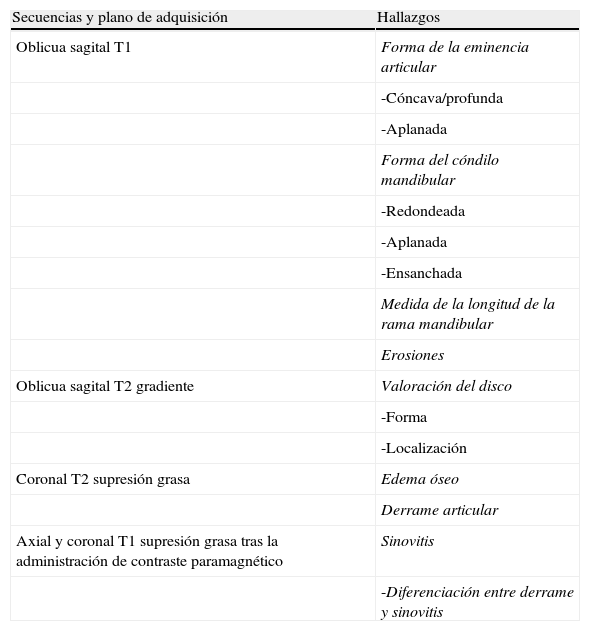El término «artritis idiopática juvenil» (AIJ) engloba un grupo de artritis de causa desconocida, que se inician antes de los 16 años y duran al menos 6 semanas. La prevalencia de afectación de la articulación temporomandibular en la AIJ varía entre un 17-87% en las series publicadas. Detectarla clínicamente es difícil por lo que la imagen tiene un papel clave para diagnosticarla y monitorizar el tratamiento. La RM es la técnica de referencia para estudiar la artritis temporomandibular porque es la más sensible para detectar la sinovitis aguda y el edema óseo. La ecografía power Doppler también permite detectar la sinovitis activa mostrando la hipervascularización de la sinovial inflamada, pero no puede identificar el edema óseo. Los objetivos del artículo son describir la técnica de RM para evaluar la articulación temporomandibular en pacientes con AIJ, definir que parámetros buscar e ilustrar los principales hallazgos.
The term «juvenile idiopathic arthritis» (JIA) encompasses a group of arthritis of unknown cause with onset before the age of 16 years that last for at least 6 weeks. The prevalence of temporomandibular joint involvement in published series ranges from 17% to 87%. Temporomandibular joint involvement is difficult to detect clinically, so imaging plays a key role in diagnosis and monitoring treatment. MRI is the technique of choice for the study of arthritis of the temporomandibular joint because it is the most sensitive technique for detecting acute synovitis and bone edema. Power Doppler ultrasonography can also detect active synovitis by showing the hypervascularization of the inflamed synovial membrane, but it cannot identify bone edema. This article describes the MRI technique for evaluating the temporomandibular joint in patients with juvenile idiopathic arthritis, defines the parameters to look for, and illustrates the main findings.
Artículo
Comprando el artículo el PDF del mismo podrá ser descargado
Precio 19,34 €
Comprar ahora




















